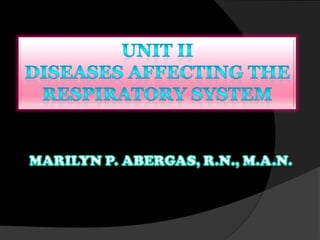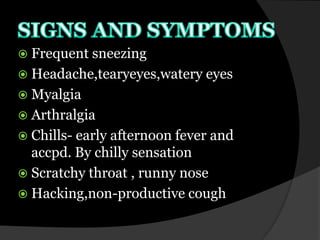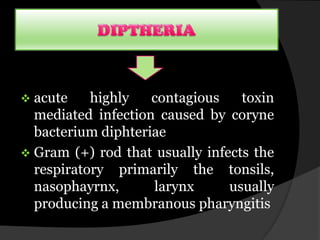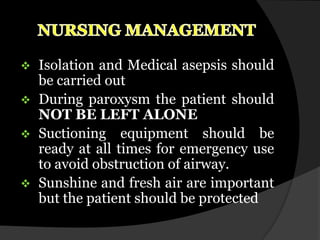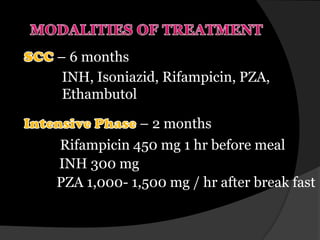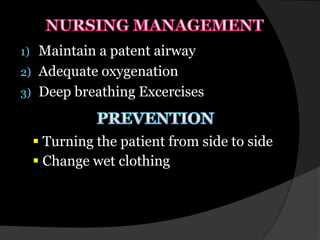This document discusses various respiratory infections including the common cold, influenza, diphtheria, pertussis, tuberculosis, and pneumonia. It provides information on the causative agents, signs and symptoms, transmission, treatment and prevention of each condition. The key points are that these are mainly infectious diseases affecting the respiratory tract, spread through droplets or direct contact, and can be prevented through vaccination, hygiene and treatment of active infections.
